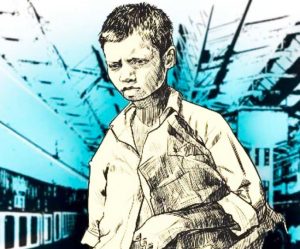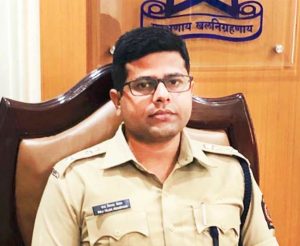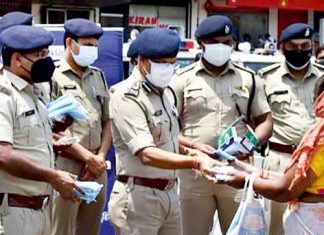
In a bid to solve the backlog of cases of kidnapped cases of minors in Palghar district, Maharashtra, the police have designed a Special Operating Procedure (SOP) after brainstorming on the pattern of past cases registered since 1999. The new SOP includes special teams, new formats and forms for data collection, data analysis to fast track investigations.
Under this initiative, police officials in the district prepared evidence-based standard operating procedures for dealing with human-trafficking related cases. The SOPs were prepared after brainstorming on the cases of missing children that had been registered in the last six years. It included studying the details of traced and detected cases including the reasons for missing, places from where the missing children were traced, background of missing children, hotspots, etc. Thereafter, reverse engineering was done to improve crime investigation. The operational SOPs were designed to plug in investigation gaps and change the approach towards a systematic, sensitive, prioritized, focused and scientific investigation. The most challenging part was sensitizing police officers and staff involved in the process.
The SOP broadly includes:
 Missing cases to be the highest priority of every Police Station In-charge.
Missing cases to be the highest priority of every Police Station In-charge.- Additional Superintendent of Police as Nodal Officer.
- Special squad at each police station.
- Format for a weekly review of cases with colour coding.
- 72-column objective format designed to be filled by the Investigating Officer (IO) in each missing case; covers all socio-economic-psychological aspects around the victim.
- Objective formats for Prevention of Immoral Trafficking Act (PITA) cases for IO to capture all forward and backward linkages.
- Sensitization of police officers, increasing the priority of missing cases.
- Awareness programs in schools and colleges.
- Corner meetings for auto drivers, cab drivers, bus conductors, etc.
- Coordination with other stakeholders like Railways, Child Welfare Committees (CWC), etc.
- Sending a lady police constable to various public places as a distraught teenager to attract and spot human traffickers.
- Sending teams with a picture album of untraced children to various red-light areas as a decoy.
- Sharing the album with all remand homes and child-welfare centres.
- Scrutiny of C-final, redistribution of work between police stations and Anti-Human Trafficking Units (AHTUs), data capturing and research, etc.
- Comprehensive research work has been done based on the data captured to understand ways to prevent such cases and improve tracing rate.
- Database of case studies that include victim statements.
Key Benefits to Public and Government
- This SOP has been designed and then implemented with a rigorous follow-up, and it has shown results. When the initiative started at the end of May 2017 in Palghar, the tracing rate for missing children till then was only 66%, and by December-end of the same year, it shot up to 94%.
- Under this initiative, in a year, more than 450 missing children were traced in Palghar alone; including cases that had remained pending for years.
- 41 PITA cases were registered in a single year in Palghar district alone.
 A human trafficking gang which was involved in trafficking more than 500 children each year was caught. It led to the creation of a systematic guideline to be followed by Investigation Officers (IOs) in missing and human trafficking cases. This also inspired dedicated officers and staff who are self-motivated and compassionate to work in missing cases and human trafficking cases.
A human trafficking gang which was involved in trafficking more than 500 children each year was caught. It led to the creation of a systematic guideline to be followed by Investigation Officers (IOs) in missing and human trafficking cases. This also inspired dedicated officers and staff who are self-motivated and compassionate to work in missing cases and human trafficking cases.
Key Stakeholders
- Police: Investigation, awareness, prevention and coordination
- Anti-Human Trafficking Unit: Investigation, support and awareness
- Railway Protection Force (RPF): Investigation, support
- Government Railway Police (GRP): Investigation, support
- Child Welfare Committees (CWC): Rehabilitation
- Remand Homes: Investigation, support
Procedural / Administrative/ Legislative Changes
New Team Structures were established
- Separate special team for missing cases in each Police Station comprising of a PSI and 3-4 staff.
- One team under an Addl. SP to coordinate with these teams to compile an India-wise data of traffickers and compare mobile data and Call Detail Record (CDR) at more than one level in each missing case to uncover any link.
Chain of Command and Control
- Separate teams at each police station to report to respective PS Inspector.
- A special team under an Addl. SP to coordinate with these teams and assist them wherever required, for instance, in technology-use or coordination with other departments.
Communication
Whenever a missing children’s case comes to be registered at the police station, the Inspector-in-Charge should immediately inform the Sub-Divisional Police Officer (SDPO) and Addl. SP, and set the investigation in motion immediately even while the case is being registered.
Monitoring and Review
 Each week, the Addl. SP uses an Excel sheet which has a colour-coded status of cases depicting various levels of severity. Red means there is no clue in the case at all at present and must be taken with utmost seriousness. Amber means there is some clue. Green means the line of investigation is very clear, for example, the case could be a love affair, or it could indicate that the place where a missing minor is going to be found is identified.
Each week, the Addl. SP uses an Excel sheet which has a colour-coded status of cases depicting various levels of severity. Red means there is no clue in the case at all at present and must be taken with utmost seriousness. Amber means there is some clue. Green means the line of investigation is very clear, for example, the case could be a love affair, or it could indicate that the place where a missing minor is going to be found is identified.- Untraced missing minor cases since 1999 are reopened.
Financial Implications
Required finances for investigation are used from within the finances already available with the department.
“Before the SOP was designed, the detection rate for missing minors was 66% in May-end for cases registered in 2017. It is now approximately 90%. One team is directly under my supervision, and there is one such team in each police station. There was a lot of sensitisation and training of police officers and we are coordinating with many NGOs,” said Raj Tilak Roshan, then Additional Superintendent of Police, who had designed a ’72-column Format Data’ which is to be completed by the Investigating Officer in each missing minor case.
 This 72-column Format Data helps in getting the personal, family and socio-economical data objectively, thereby aiding in a thorough investigation of cases. Around 64% of crimes in Palghar are registered in the Vasai-Virar area. The then Superintendent of Police, Manjunath Singe said that the priority is to ensure and save the children, especially minor girls, from landing in the trafficking net.
This 72-column Format Data helps in getting the personal, family and socio-economical data objectively, thereby aiding in a thorough investigation of cases. Around 64% of crimes in Palghar are registered in the Vasai-Virar area. The then Superintendent of Police, Manjunath Singe said that the priority is to ensure and save the children, especially minor girls, from landing in the trafficking net.
Our Correspondent













